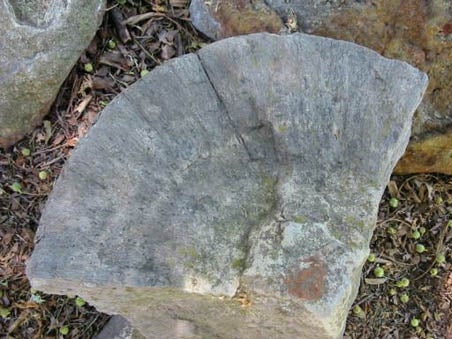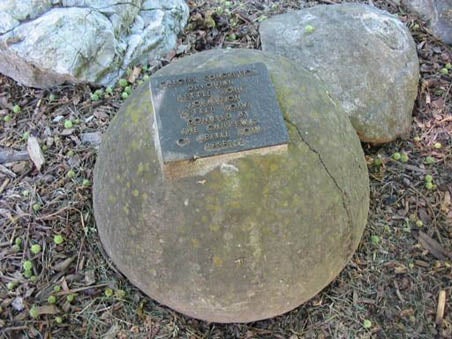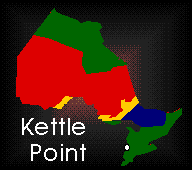Concretions
"kettles",
sedimentary
rock,
Kettle
Point,
Ontario.
Paleozoic
Upper
Devonian,
370
million
years
ago,
Kettle
Point
Formation.
The
concretions
are
known
as
kettles
and
are
found
in
shale
along
the
shore
of
Lake
Huron
at
Kettle
Point.
The
kettles
were
formed
while
the
mud
which
formed
them
was
still
soft.
Bacteria
in
the
mud
caused
sulphate
reduction
and
the
precipitation
of
concretions.
The
crystals
formed
in
a
radiating
pattern,
from
the
centre
out,
creating
a
ball
these
can
range
in
size
from
30
cm
to
1.5
m
across.
The
pieces
in
the
geological
garden
are
fragments
from
a
ball.
Marcasite/iron
sulphide
concretions
also
formed
in
the
same
brown
shale.
They
have
a
rusty
brown
surface
and
when
broken,
the
pale
white-gold
metallic
interior
is
seen.
The
marcasite
nodules
grow
to
about
3
cm,
in
diameter.
As
the
mud,
under
pressure
from
overlying
rocks
lost
water,
the
rock
hardened
and
reduced
in
volume.
When
seen
at
Kettle
Point
the
concretions
look
as
though
the
layers
of
shale
have
wrapped
around
them.
When
the
kettles
are
studied
the
original
layering
in
the
mud
may
be
seen.


